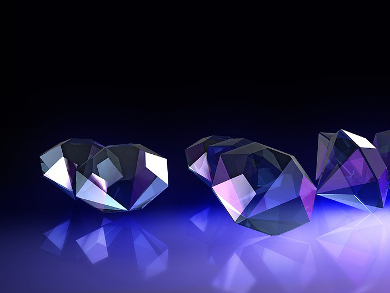Adamantane (C10H16) is structurally very similar to diamond. Subjecting it to high pressures to produce nanodiamonds is, thus, a promising approach. However, at 12.5 GPa and temperatures of about 2300 K, graphite is produced first and the resulting diamonds are polycrystalline. For some applications, e.g., in quantum optics, a higher quality of diamond is needed.
Igor I. Vlasov, General Physics Institute and National Research Nuclear University ‘MEPhI’, both Moscow, Russia, and colleagues have developed a method for the synthesis of nanodiamonds from adamantane which produces diamond crystals with ultrasmall sizes down to about 3 nm. The team used a high-pressure chamber and synthesized the diamonds in titanium capsules at pressures of ca. 9 GPa and temperatures of 1600 K.
The nanodiamonds were characterized using transmission electron microscopy (TEM), confocal Raman spectroscopy, and photoluminescence experiments. The results confirm the diamond crystal structure of the nanoparticles. By mixing the adamantane with its derivative adamantane carbonitrile, the researchers were able to directly synthesize nitrogen-doped nanodiamonds.
- High-pressure synthesis of nanodiamond from adamantane: myth or reality?,
Evgeny Ekimov, Oleg Kudryavtsev, Natalia Mordvinova, Oleg Lebedev, Igor I. Vlasov,
ChemNanoMat 2017.
https://doi.org/10.1002/cnma.201700349




